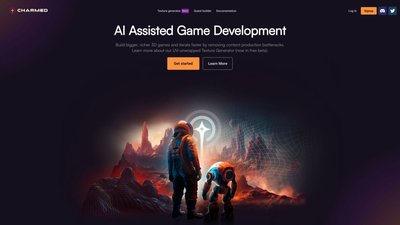Meet Genie 2, Google DeepMind''s newest AI model. It brings interactive 3D worlds to life from just a single image or text description. This cool technology opens up new ways to create and explore virtual environments. It is a big deal in AI-driven content creation.
Genie 2 can make complex, playable 3D environments from a single image prompt. These environments offer different views like first-person, isometric, and third-person. This lets users experience them in various ways. Beyond just creating static scenes, Genie 2 can show physical phenomena. These include gravity, water effects, lighting reflections, and even the behavior of non-playable characters. Users can interact with these environments using keyboard and mouse inputs. They can perform actions like jumping, swimming, and moving objects.
One of Genie 2''s standout features is its long-term memory capability. This allows the model to remember elements of the environment that are no longer visible. This ensures accurate rendering when these elements come back into view. This provides a seamless experience as users navigate through the generated worlds. Trained on a large-scale video dataset, Genie 2 exhibits advanced capabilities. These include object interaction, character animations, and predicting agent behaviors. It can generate consistent worlds for up to a minute, with most examples lasting around 10-20 seconds. Genie 2 is designed with a user-friendly interface, making it accessible for both researchers and casual users interested in AI and virtual world generation. Users can easily create and manipulate environments through simple commands.
Genie 2 offers a versatile tool for AI training, rapid prototyping, and interactive research. It can generate infinite unique environments for training AI agents. This provides a diverse and dynamic setting for learning and evaluation. Game designers and artists can test concepts in seconds rather than days. This speeds up the creative process and lowers the barriers to entry. Additionally, Genie 2 opens up new possibilities for studying AI behavior in dynamic environments. It serves as a valuable tool for prototyping interactive experiences and evaluating AI agents. The quality of the generated images may degrade over time, and world consistency has temporal limits. The use of copyrighted materials in training datasets raises questions about intellectual property and the legality of the generated content.
As of now, Genie 2 is not yet available to the public, and its release timeline is uncertain. The shared examples demonstrate its promise as a game-changing technology for researchers, developers, and enthusiasts alike. As academic and industry interest in world models grows, Genie 2 is just the beginning. Whether it inspires new forms of creativity or disrupts established industries depends on how it is used and regulated in the years to come.







Comments
Please log in to post a comment.